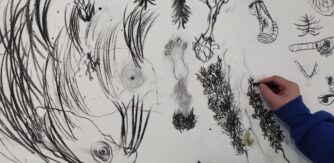Blag 3 – An Dr. Jo Lewis, Ealaíontóir & Faighteoir na Dámhachtana Sparánachta do Dhaoine Óga, Leanaí agus Oideachas ón gComhairle Ealaíon
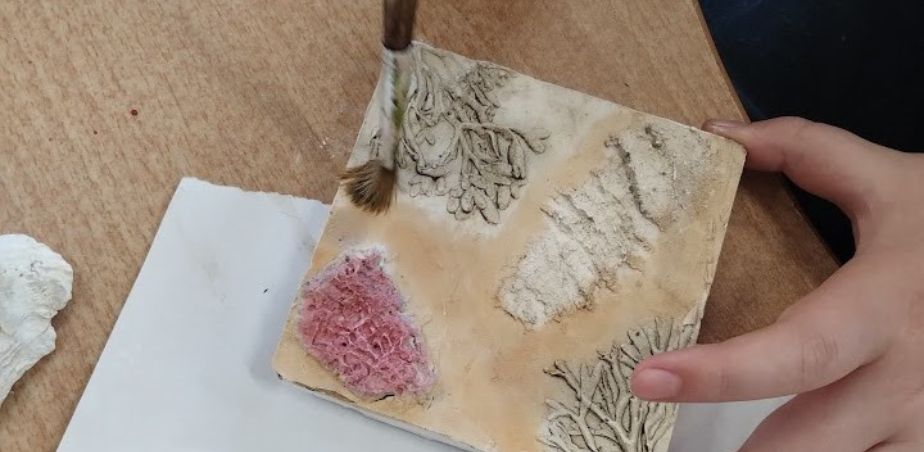
Priontáil agus teilgean le Scoil Náisiúnta Ráth Lao - ceardlann chladaigh

Ghnóthaigh Jo Lewis céim Bhaitsiléara Ealaíon sa Mhínealaín in Coventry agus céim Mháistreachta i Mínealaín sa Dealbhóireacht ó Scoil Ealaíne Birmingham. Bhí stiúideo aici i stiúideonna SPACE Londan ar feadh roinnt blianta, áit ar oibrigh sí agus ar chuir sí saothair ar taispeáint agus í ag reáchtáil na bialainne veigeatóra 100 suíochán, Heather’s, san am céanna, in éineacht lena páirtí.
In 2002, d’aistrigh Jo ó Londain go Co. Liatroma lena páirtí agus lena gclann óg gur chóirigh siad seanteachín cloiche, chun ‘saol maith’ a bheith acu.
Le linn an ama seo, ghnóthaigh sí PhD ag SOAS (Scoil na Staidéar Oirthearach agus Afracach) as a cuid taighde ar Ealaíontóirí Mná na Botsuáine. Tá an tráchtas s’aici anois faoi choimeád Leabharlann na Breataine.
D’oibrigh Jo ar an tionscnamh BLAST (Ealaín Bheo a Thabhairt chuig Daltaí agus Múinteoirí) agus theagasc sí i scoileanna ar fud chontae Shligigh. Le déanaí, le haghaidh na mionchónaitheachtaí seo i scoileanna, dhírigh Jo ar na daltaí a thabhairt amach faoin spéir chun ealaín a dhéanamh agus inspioráid a fháil. D’úsáid sí tírdhreach áitiúil mar chúlra chun tumadh isteach in éiceolaíocht na háite tríd an ealaín.
In 2023, bhronn Comhairle Ealaíon na hÉireann sparánacht ar Jo chun rud beag taighde a dhéanamh ar an gcomhéadan idir an ealaín agus an éiceolaíocht san oideachas scoile mar bhealach chun spéis a mhúscailt i measc páistí i leith a dtimpeallachta.
Cleachtadh ealaíne mar mhodh chun do thírdhreach agus do bhraistint mhuintearais a thuiscint
Nuair a aithnítear gnéithe den timpeallacht thart timpeall orainn, is féidir linn tuiscint níos fearr a fháil ar an talamh a bhfuilimid ag seasamh air, chomh maith leis an tírdhreach a fheicimid i bhfad i gcéin. Is féidir leis an aitheantas seo agus leis an gcumas ‘léamh’ a dhéanamh ar chuid den timpeallacht a bhfuil tú ag taisteal, ag siúl nó ag tiomáint tríd, ár gceangal agus braistint mhuintearais a neartú.
Is féidir leis a bheith dúshlánach sin a dhéanamh linn féin agus le leanaí agus daoine óga ar bhealach suimiúil. Rogha eile seachas an tírdhreach a fheicimid i gcéin a phéinteáil ná dul isteach sa timpeallacht agus scrúdú a dhéanamh ar chuid de na mionsonraí atá sa radharc sin. Is bealach spraíúil agus éagsúil é ag dul taobh amuigh go dtí coillearnach, páirc áitiúil, an trá, portach agus scrúdú a dhéanamh ar na heilimintí éagsúla atá mar chuid den tírdhreach sin, ag baint úsáid as réimse cleachtas ealaíne chun nascadh leis an éiceolaíocht; is comhéadan é a thairgeann go leor féidearthachtaí don chruthaitheacht agus don fhoghlaim.
Is cleachtais chruthaitheacha ar fad iad bailiú, aithint, brú, lipéadú, tarraingt, priontáil, teilgean ar féidir leo sinn a thabhairt níos gaire don dúlra. Tá cúpla próiseas a d’úsáid mé go rathúil le scoláirí amhail smaointe do cheardlann chruthaitheach:
Taispeáin conas a bailíodh agus a lipéadaíodh plandaí le haghaidh luslanna – iarr orthu an planda is suimiúla leo a phiocadh – brúigh é agus lipéadaigh é lena úsáid ar ais sa seomra ranga / stiúideo (féach íomhá a haon thíos) (cliceáil anseo le haghaidh Chumann Luibheolaíochta na Breataine agus na hÉireann – Cód Iompair le haghaidh plandaí fiáine a phiocadh, a bhailiú, grianghraf a ghlacadh díobh agus taitneamh a bhaint astu)
Tarraing an planda in situ, cuir cuid den timpeallacht san áireamh agus déan nótaí ar an suíomh, an dáta agus an aimsir.
Ar ais sa stiúideo/ seomra ranga, déan an planda a shainaithint ag baint úsáid as treoracha nó aipeanna ag cur faoi deara an Laidin agus an t-ainm coitianta – smaoinigh ar conas a d’fhéadfá a bheith in ann cuimhneamh air.
Tarraing an planda go mion – comhoibrigh le daoine eile chun tírdhreach a dhéanamh de na plandaí (féach íomhá a dó thíos)
Úsáid an planda brúite le priontáil ag úsáid dúch nó déan prionta 3T ag úsáid cré – déan cinnte an t-ainm a mheabhrú – lipéadaigh an saothar le d'ainm agus ainmneacha na bplandaí (féach íomhá a trí thíos)
Ach seasamh in aon láthair amháin agus cuid de na plandaí agus na gnáthóga a fheicimid timpeall orainn a aithint agus a ainmniú, b’fhéidir, tabharfaidh sin (go fo-chomhfhiosach nó a mhalairt) muinín dúinn maidir le cá bhfuilimid sa domhan.
[caption id="attachment_10743" align="aligncenter" width="661"] Íomhá 1: Plandaí portaigh brúite agus sainaitheanta[/caption]
Íomhá 1: Plandaí portaigh brúite agus sainaitheanta[/caption]
[caption id="attachment_10885" align="aligncenter" width="661"]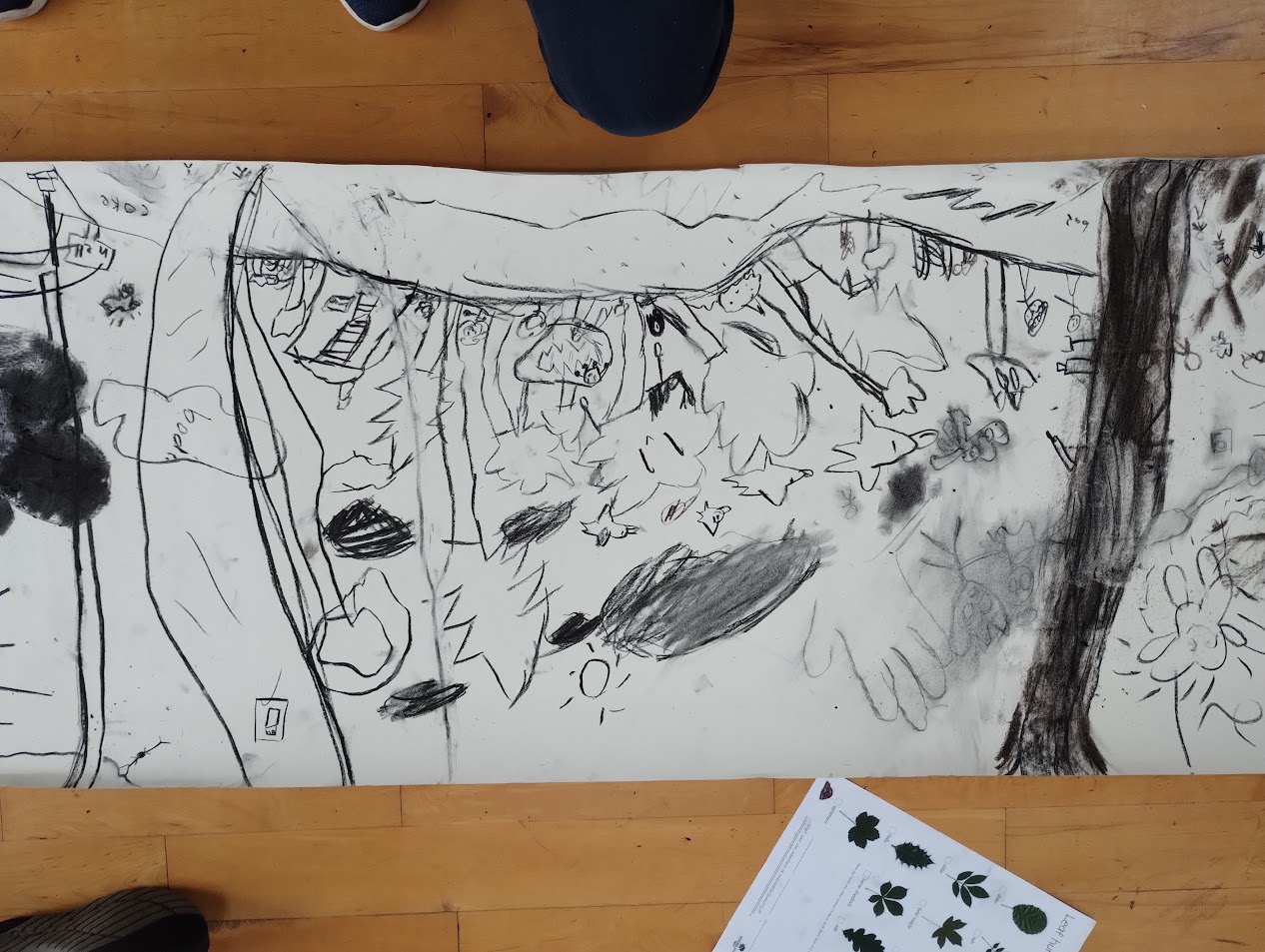 Íomhá 2: Scoil Náisiúnta Chalraí ag baint úsáid as tagairtí aitheantais Plandaí dá líníochtaí[/caption]
Íomhá 2: Scoil Náisiúnta Chalraí ag baint úsáid as tagairtí aitheantais Plandaí dá líníochtaí[/caption]
[caption id="attachment_10886" align="aligncenter" width="661"] Íomhá 3: Priontáil agus teilgean le Scoil Náisiúnta Ráth Lao - ceardlann chladaigh[/caption]
Íomhá 3: Priontáil agus teilgean le Scoil Náisiúnta Ráth Lao - ceardlann chladaigh[/caption]
[caption id="attachment_10888" align="aligncenter" width="661"]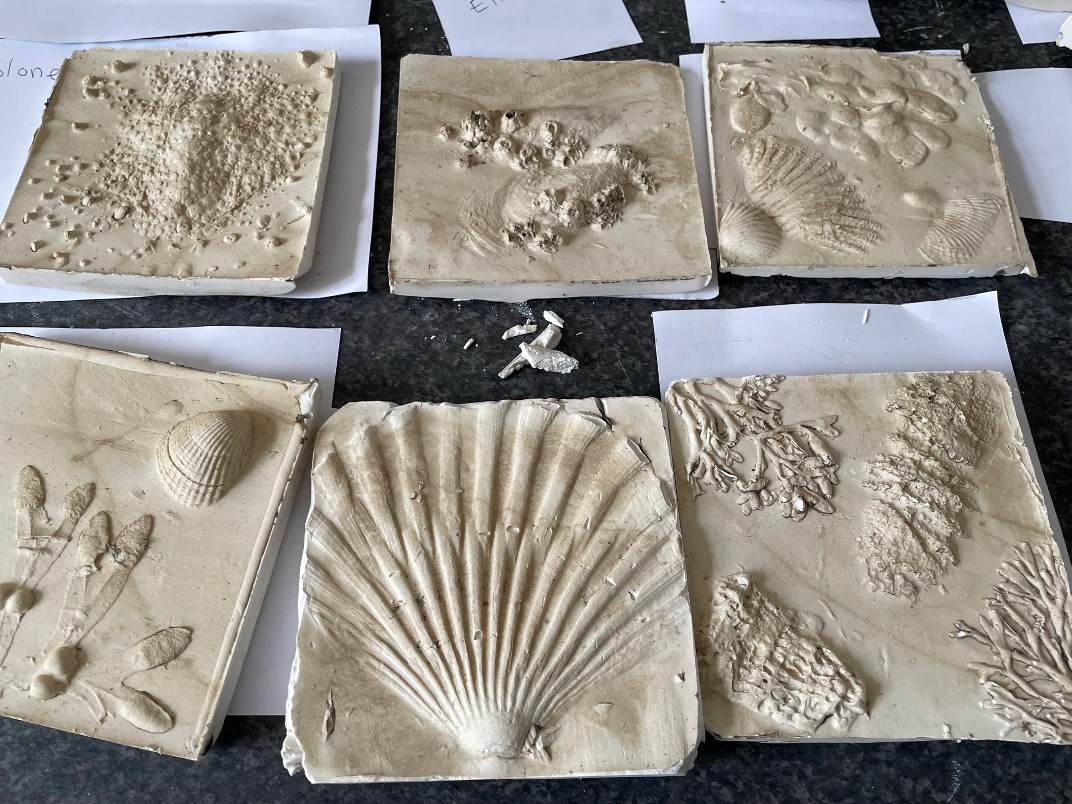 Íomhá 4: Teilgin phlástair de chuid Scoil Náisiúnta Ráth Lao[/caption]
Íomhá 4: Teilgin phlástair de chuid Scoil Náisiúnta Ráth Lao[/caption]
[caption id="attachment_10890" align="aligncenter" width="661"] Íomhá 5: Píosa deiridh le heochair eolais a aithníonn an éiceolaíocht cois cladaigh agus an t-ealaíontóir[/caption]
Íomhá 5: Píosa deiridh le heochair eolais a aithníonn an éiceolaíocht cois cladaigh agus an t-ealaíontóir[/caption]
[caption id="attachment_10882" align="aligncenter" width="661"]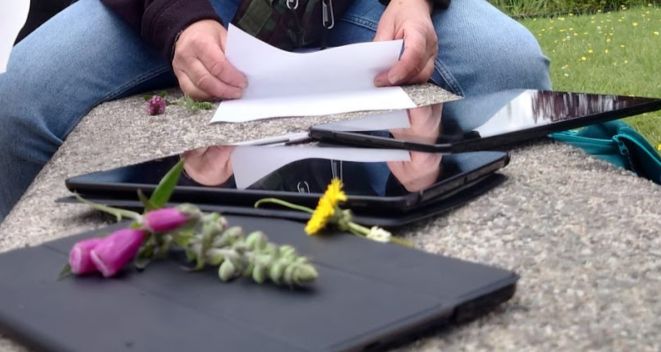 Íomhá 6: Scoláirí ag sainaithint plandaí i gCora Droma Rúisc[/caption]
Íomhá 6: Scoláirí ag sainaithint plandaí i gCora Droma Rúisc[/caption]
Gach grianghraf le caoinchead Jo Lewis – scoláirí ó Scoil Náisiúnta Ráth Lao agus Scoil Náisiúnta Chalraí, Co Shligigh ag baint úsáid as tagairtí plandaí chun plandaí agus éiceolaíocht chladaigh a shainaithint, a tharraingt agus teilgin phlástair a dhéanamh díobh.

